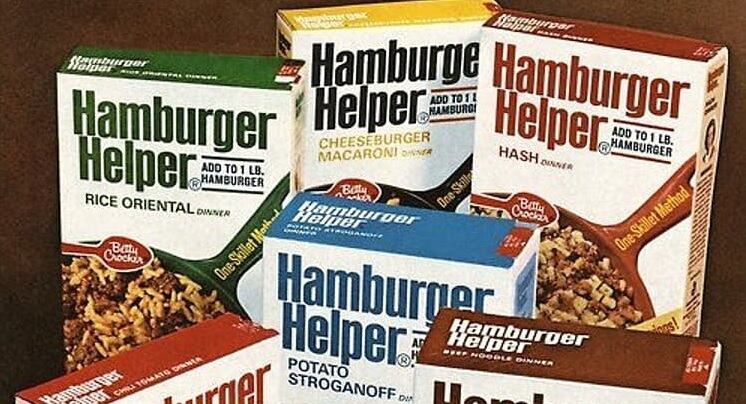“I don’t think I’m going out on a limb to say the economic outlook for many developed markets is not highly positive,” with inflation rising, labor tight, supply chains strained and the Federal Reserve raising interest rates, General Mills CEO Jeff Harmening said last week at the dbAccess Global Consumer Conference.
But, he added, “we tend to operate well in environments … where the economics get difficult,” and therefore, Harmening said he doesn’t see a reason to shift strategies.
“We don’t feel as if we should choose between doing well in the present and preparing our well for the future,” he said. “It’s not really a time to pull back. It really is a time to make sure we are executing well in the current environment, which we are … but also investing in capabilities like strategic revenue management or data and analytics capabilities” that will set General Mills up for future success.
He explained: “We’ve invested over $100m in our data and technology capabilities over the last couple of years, because our goal, which we think is eminently achievable, is to come out of the pandemic stronger than we went in.
“And history has shown that those companies that cannot only perform in the current, but also build capabilities that set themselves up for the future, are the ones that come out of times like this even stronger.”
A strong track record during economic downturns
History has also shown that General Mills traditionally performs well during challenging economic times, which further reinforces Harmening’s decision not to hold back, but rather charge forward.
Reflecting on the 2008 recession, Harmening explained that many consumers traded away from home eating for at-home eating, which helped General Mills’ categories grow a couple percentage points faster than in periods when the economy is doing well.
“When people talk about trading down [during economic uncertainty] a lot of times they start with what private label is going to do. But that’s actually not the best starting point. The starting point is where are people going to eat, and increasing, they eat at home,” Harmening said.
“And we’re actually starting to see that already, even over the last month or two, the percentage of food occasions that are at-home have grown by a point or two even over the last couple of months when people are itching to get out, but they’re concerned about the economic scenarios that face them and that causes them to be at home more,” he added.
This should help General Mills hold share even as private label sales also increase as consumers look for value, as was the case in 2008, Harmening said.
“I think the lesson learned there is that, if you have strong brands, and you apply good capabilities and good branding with that, you can hold share in an environment that’s growing a couple of points faster,” he said.
He cautioned that “it’s the brands in the middle that get squeezed or the companies who are not investing … that end up on the wrong side of the ledger, and we’ve applied that thinking in the current environment, and we’re really pleased with our brand performance and our capability development.”
Ongoing portfolio reshaping will help General Mills grow 2-3%
With that in mind, Harmening said General Mills will continue to reshape its portfolio through potential mergers, acquisitions and divestitures in the future with a goal of growing 2-3%, “inflationary period notwithstanding,” and delivering mid single-digit operating profit growth and mid-to-high single-digit earnings per share growth.
“As we look over the last few years, we’ve reshaped about 20% of our portfolio, which is to say 20% of our sales are from different places than they were four years ago, which is quite a bit. And it’s added over a point of growth for context,” Harmening said.
Pleased with these results so far, Harmening added that General Mills will look at doing more portfolio shaping and will target assets that are a strategic fit and can be done at a price that adds value for shareholders.
He also noted that General Mills is looking for long-term results from deals, not immediate impact.
“We’re looking at internal rate discounted cash flows. What we don’t look at really … is how much dilution is it going to cause in the next fiscal year. We’ve been around 155 years, and we are going to play the long game. So, we’ve been really pleased, and we think there is more on the … horizon,” he said.
The company will temper investments by deprioritizing areas and activities that “aren’t generating the returns that we want in order to do things more like data and analytics that we think are going to be more important to us,” he added.
Additional pricing remains an option
While General Mills looks to add value through investments, it also remains open to additional price increases to offset rising input costs – a decision that appears to go against recent comments by Walmart and Target.
In recent months, Walmart and Target have noted that while many consumers are not yet trading down or pulling back on spending, they are paying attention to pricing – prompting the retailers to look at how they can lower prices or leverage promotions to move inventory.
However, this doesn’t mean the window is closing for passing additional price increases to consumers to offset inflation, argued Harmening.
He acknowledged that everyone is concerned about consumers’ welfare and ability to absorb price increases, which is why the company’s “first defense against having to raise prices is our productivity,” which has generated $4bn in the past decade.
This is a “good number, but when your inflation is double digits, you can’t really get away from pricing, and so we do see prices going up … as long as inflation continues to rise,” he said.
Through a combination of investments, pricing and productivity increases, Harmening is optimistic about the future, even as the economy becomes increasingly strained.




